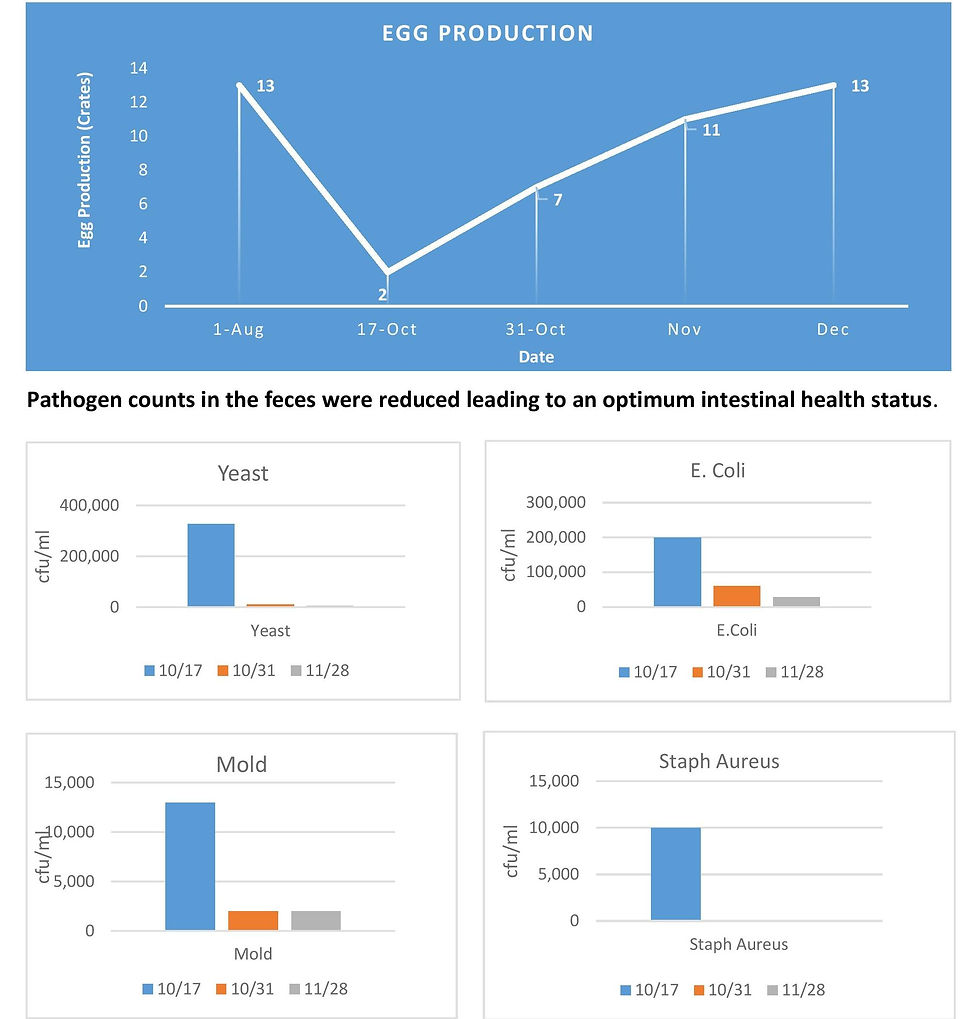Effect of Excell™ on Free-Range Layers
- fender2509
- Jun 23, 2022
- 2 min read
Updated: Aug 30, 2023
A Excell™ feeding trial was conducted on a 2,600-range layer operation experiencing significant egg production loss and high mortality.
A necropsy of several birds suggested cloacitis, an infection of the cloaca or vent and fecal samples were analyzed for microbial contamination.
The lab analysis revealed a very high level of pathogen contamination present in the feces as shown below in colony forming unites (CFU) per ml.
· Yeast…. 327,000
· E. Coli …too many to count
· Staph Aureus…10,000
· Mold….13,000
The high pathogen load in the intestine had compromised the immune system, negatively affected digestion, reduced egg production by 75% and was responsible for a high mortality rate.
Improvement of Intestinal Health
Excell™, a lactobacillus fermentation product from Key Ag was added to the diet at the rate of 2 lbs. per ton of feed. At two weeks and six weeks after feeding Excell™, fecal samples were again analyzed for microbiological counts as shown in figure 1 below.

Summary
Feeding Excell™ helps to maintain intestinal health by supporting the beneficial intestinal microflora and maintenance of optimal gut pH. This activity optimizes the gut environment that helps reduce reduces the pathogenic load, return of normal digestion. Egg production and mortality returned to original levels.
Graphs showing egg production response and microbial level in the feces prior to feeding Excell™ and at two and six-weeks post treatment.
Egg production was at 13 crates per day in August prior to the issue and dropped to a low of two crates per day by October. On October 17, Excell™ was included in the diet at two pounds per ton of feed.
Egg production increased over time from October 17 to original production of 13 crates in December.


The Next Generation Of Animal Health!






Comments